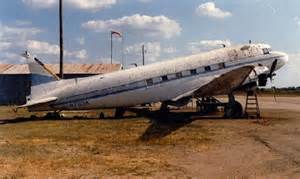2020 marked the 36th anniversary of the Museum. We are publishing our history in a series of articles in The Logbook, which is a bi-monthly publication of the Prairie Aviation Museum. We will also be publishing those articles in this area of the website. Please visit these pages from time to time to learn about the beginning, expansion, difficult times, rebirth and future of the museum.
If you have questions or comments about our history articles, please call the museum at 309.663.7632 or email us at [email protected].
Part One 30 Years in Review – The beginning
Aviation has always attracted people and the prospect of restoring a B-25H brought a group of volunteers together in Springfield in 1980. Heritage In Flight was organized to provide funds and labor for the restoration. With members from all around central Illinois, the Heritage in Flight Museum, Inc grew to 260 members by 1982.
On May 9, 1982 an article in the Bloomington Pantagraph written by local organizer, Norm Wingler, inviting local aviation enthusiasts to join a prospective branch of the Springfield organization named the Gooney Bird Chapter of Heritage in Flight. The objective of this Chapter was to acquire a surplus C-47/DC-3 that would become a local restoration project. With confirmed interest of over 30 local residents, the Gooney Bird Chapter was chartered in 1982 and acquired non-for-profit certification. Meetings were held in the Bloomington/Normal Airport terminal Conference room on the second Monday of each month.
By the end of 1982, the local membership was nearing 50 volunteers and was endorsed by Bloomington Normal Airport Manager, Charles Waugh saying “Anything that has to do with the history of flying, basically promoting the industry, I will support 100 per cent!” Member enthusiasm was high! A bi-monthly newsletter, Heritage In Flight Newsletter, shared news of the organization. Each publication contained information on the progress of the Gooney Bird Chapter in Bloomington.
Any developing organization needs funds to operate with and The Gooney Bird Chapter was no different. The first fund raiser was held June 1982 in Clark Aviation’s hanger (was Image Air and is now Synergy Flight Center) and planes and cars were washed. On November 6, 1982, members joined to assemble fresh pizzas for sale to the public. By the end of the day, 977 pizzas had been assembled and sold. This revenue source became the proven fund raiser for many years to follow.
The search for a surplus C-47/DC-3 was quite illusive and sources were investigated from coast to coast. Many of the surplus military aircraft were being placed at military facilities as static displays and not easily acquired by willing buyers.
On October 26, 1983, following a special membership meeting, information about the legal challenges being faced by the Springfield parent organization was presented. It was decided, that to protect the limited assets of the Gooney Bird Chapter, the membership voted to change the articles of incorporation to become the Prairie Aviation Museum, a stand-alone organization.
Prairie Aviation Museum was officially born!
Part Two 30 Years in Review – More on the Beginning
As stated in the first article on the Museum’s history, the Museum was incorporated by the State of Illinois as the Gooney Bird Chapter of the Heritage-in-Flight Association in November 1982. The first officers of the Chapter were Norm Wingler – President, John Percy-Vice President, Bill Baird- Secretary and Paul Baker-Treasurer. All four worked for the State Farm Mutual Insurance Company in Bloomington, Illinois. John Percy was the Company’s Chief Pilot, which proved to be an asset to the Museum.
Within 6 months, the Chapter gained 37 members from the Central Illinois area. General Membership monthly meetings were held in the Bloomington/Normal Airport Authority conference room. When vacant office space became available on the second floor of the Airport Terminal Building, the Chapter was granted permission by the Airport Authority to use this space as a temporary exhibit area. Information on the Douglas DC-3/C-47 aircraft that the Chapter was seeking was displayed as well as significant aircraft in the history of American aviation. Also, the Chapter had begun to gather aviation mementos, which were also displayed. The Chapter remained in the Terminal Building until the Museum’s first building was ready for occupancy in the Spring of 1988.
When the Heritage-in-Flight Association ran into legal difficulties with its membership over the B-25 aircraft it was trying to restore, the Executive Board of the Gooney Bird Chapter decided to distance itself from the Association and protect the acquired assets of the Chapter. On August 1, 1984 the Gooney Bird Chapter was dissolved and the Prairie Aviation Museum was incorporated by the State of Illinois. The officers were once again Norm Wingler – President, John Percy-Vice President, Bill Baird- Secretary and Paul Baker-Treasurer.
Museum member Steve Venters, an aviation artist, created the Prairie Aviation Museum’s first official logo.
The shield with scroll is the traditional group color emblem display of the United States Air Force. The deep blue field with nebulae, a symbol of clouds, alludes to the sky. The golden spread wings signified our determination to fly our display aircraft. The silver ![pozark7[1]](https://prairieaviationmuseum.org/wp-content/uploads/2014/02/pozark71-300x291.jpg) propeller, along with the gold piped Army Air Corps emblem denoted our group interest in historic aircraft. The red-sub-field was to honor all pilots who have given their lives in the furthering of aviation. The green horizontal stripping indicated the forest and the even stitch rows of gold comprising the lower field the harvest producing plains of our prairie state. This logo was used by the Museum until July 2005 when it was replaced with the Museum’s current logo.
propeller, along with the gold piped Army Air Corps emblem denoted our group interest in historic aircraft. The red-sub-field was to honor all pilots who have given their lives in the furthering of aviation. The green horizontal stripping indicated the forest and the even stitch rows of gold comprising the lower field the harvest producing plains of our prairie state. This logo was used by the Museum until July 2005 when it was replaced with the Museum’s current logo.
Part Three 30 Years in Review – The Arrival of DC-3 N763A
In the Fall of 1983, Bill Leff, a Prairie Aviation Museum member and corporate pilot, learned of a DC-3 for sale in Stockdale, Texas. Having some spare time, Bill flew to Stockdale and found DC-3 N763A at the Coffield Airport. After an inspection of the aircraft, he determined that the aircraft was in reasonable good shape for its age. When he returned to Bloomington, Bill made a recommendation to the Museum’s Board of Directors to consider buying the aircraft. Upon further investigation by the Board, and the fact it was exactly the aircraft they were looking for, it was decided to purchase N763A. In February 1984, the Prairie Aviation Museum purchased the aircraft from Tradewinds Aircraft Sales in San Antonio, Texas. The purchase price was $28,000. Tradewinds acquired N763A in 1983 at an estate sale of the late millionaire H. H. Coffield.
A brief history of N763A is as follows. It was manufactured by the Douglas Aircraft Corporation in Santa Monica, California as a C-53 aircraft. Its serial number was AC41-20124 with an acceptance date of March 11, 1942. The C-53 was a passenger version of the famous Douglas C-47 cargo aircraft. Upon leaving the factory, it returned to the factory, was painted blue and designated a R4D-3 and was assigned to the US Navy/Marine Corp. In 1945, it was sold by the War Assets Administration to Southern Airways and they converted it into a DC-3 airliner with the tail number N763A. Southern Airways flew N763A for about 4 years before selling it to another airline. It was eventually purchased by businessman H. H. Coffield and was used as a corporate aircraft flying everything from chickens to Hollywood movie stars.
When N763A was purchased in February 1984, it had not been flown for about 14 years. It had sat on the Coffield Airport with all control surfaces removed collecting moss on the top of its fuselage. It gathered so much moss; locals gave her the nickname “Miss Mossback.” As the aircraft was not flyable, the Museum contracted with Toliver (Bill) Wilson of Midland, Texas to prepare N763A for a ferry flight from Stockdale, Texas to Bloomington, Illinois. With the assistance of Mr. Wilson’s sons, Wade and Stan, work  started in March 1984. All aircraft systems had to be inspected and many had to be overhauled. The Wilson crew had to work 5 to 6 days a week at times to get her ready. In early November 1984, Miss Mossback was ready for her ferry flight to Bloomington. Total costs, parts and labor, came to $32,000.
started in March 1984. All aircraft systems had to be inspected and many had to be overhauled. The Wilson crew had to work 5 to 6 days a week at times to get her ready. In early November 1984, Miss Mossback was ready for her ferry flight to Bloomington. Total costs, parts and labor, came to $32,000.
On November 19, 1984, N763A departed Coffield Airport for its 8 hour flight to Bloomington. George Carpenter, a retired Ozark Command pilot and Bill Leff flew the aircraft. Dave Maisak was the flight engineer. N763A arrived in Bloomington at 5:00pm. The flight was uneventful except for the crew who were very cold, as the cockpit had no heat during the flight. A small contingent of Prairie Aviation Museum members and DC-3 enthusiast were there to welcome Miss Mossback to her new home. The Museum finally had its first aircraft. Total cost was $60,000. Now to raise the funds to complete the restoration of N763A.
